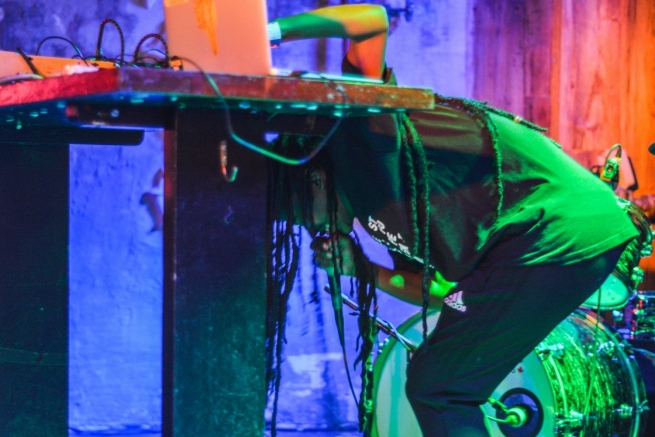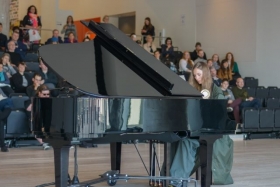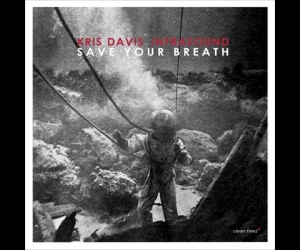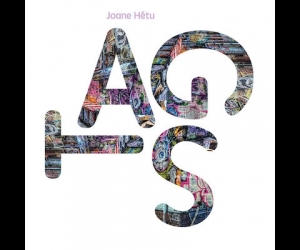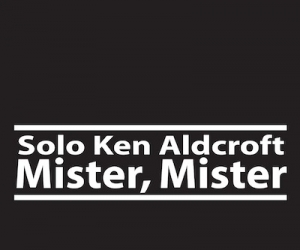“In New York, there would be twelve people here,” venerable Halifax percussionist and mentor Jerry Granelli declares. “Here we are in Halifax, and tons of people are coming out to hear weird music!”
OBEY is weird. Its programming is marked by an aesthetic of eclecticism that reflects the diversity of contemporary expressive music. (“Experimental” and “avant-garde” feel too old-fashioned; I hear “under-represented” thrown around too, but that sounds a little colourless. “Weird” may not be particularly precise, but it will have to do.) Whereas more precisely genre- or locale-focused festivals can end up feeling a little one-note, OBEY’s weird curatorial sensibility frees it to construct thematic narratives drawn from the entirety of contemporary music. Over the course of the weekend, which began with a microphone being dropped into the ocean, OBEY descended into the sonic maelstrom with an impressively varied cast of provocateurs—taking in hip hop, industrial metal, electronic music, and hardcore punk—and emerged on the final day on a meditative, restorative note with installation art, solo piano, and ambient music.
On day one, a texturally varied multipart composition by Toronto’s Colin Fisher was followed by the musings of mad-scientist drummer Granelli, whose gleeful fortissimo slaps on three tuned cowbells sent fingers into ears around the church. Then came Senyawa, an Indonesian doom-folk duo consisting of instrument-builder Wukir Suryadi and vocalist Rully Shabara, whose performance was the festival’s first real highlight. (Incidentally, all the genres mentioned here are taken from OBEY’s vivid program guide.) The duo blew away the audience with theatrical, quasiritualistic trance pieces, courtesy of virtuosic musicianship, as indebted to traditional forms as to heavy metal and the avant-garde.
Day two started with an engaging presentation delivered to a packed house by Chris Murdoch on the history of black people in punk rock and ended with “Philadelphia’s avant-activist” Moor Mother (see top photo), who electrified the Seahorse with her brazenly political mix of hip hop, spoken word, performance art, lecture, and electronic music.
On day three, Toronto experimental vocalist and pianist Xuan Ye opened with a carefully calibrated sound-art improvisation that saw throat singing give way to dragging her microphone across the piano strings. Xylouris White (charismatic Cretan lute player George Xylouris and Australian drummer Jim White of the Dirty Three) warranted standing ovations with an energetic, accessible set of post-folk.
On the final day, Patterson introduced Kara-Lis Coverdale (left) by musing on the floating sensation he has started to feel. The last time I saw Coverdale was at Toronto’s Hearn Generating Station for the Unsound festival, where she played a loud electronic set that was one of that festival’s highlights; at OBEY, I was surprised to see her sit down at a piano in the light, airy Paul O’Regan Hall at Halifax’s fancy new Central Library to play a ninety-minute post-minimalist composition with shades of Reich, Ravel, and Julius Eastman. Though it was completely different from what I was expecting, it was also a definite highlight.
That evening, cult ambient guru Laraaji proved to be the perfect conclusion. His radiant soundscapes, transcendent message, and contagious laugh were just the mental massage everybody needed after a weekend of varied, challenging, vital music.
OBEY Convention photos by: Meg Yoshida
